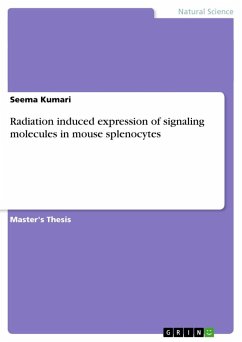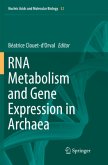Master's Thesis from the year 2004 in the subject Chemistry - Bio-chemistry, , course: M.Sc - Biochemistry, language: English, abstract: The hazards of exposure to ionizing radiation were recognised shortly after Roentgen's discovery of x-rays in 1895. Acute skin cancer, leukaemia and other biological damage were observed in the individuals working with x-ray generator. In the year, 1898 Becquerel performed the first recorded experiment in radiobiology, from this earlier study of radiobiology began. Since that time, a tremendous amount of research has been done attempting to interpret the reactions which take place from the moment that radiation enters a living cell until some permanent damage is produced. From beginning to end, these initial reactions are probably completed in a millionth of a second, making them very difficult to study. For this reason, it is still not known which of the many chemical or biochemical reactions brought about by ionizing radiation are responsible for initiating biological damage. Ionizing radiation is energy transmitted by X-rays, gamma rays, beta particles (high-speed electrons), alpha particles (the nucleus of the helium atom), neutrons, protons, and other heavy ions such as the nuclei of argon, nitrogen, carbon, and other elements. X-rays and gamma rays are electromagnetic waves like light, but their energy is much higher than that of light (their wavelengths are much shorter). Ultraviolet (UV) light is a radiation of intermediate energy that can damage cells like sunburns, but UV light differs from the forms of electromagnetic radiation mentioned above in that it does not cause ionization (loss of an electron) in atoms or molecules, but rather excitation (change in energy level of an electron). The other forms of radiation particles are either negatively charged (electrons), positively charged (protons, alpha rays, and other heavy ions), or electrically neutral (neutrons). [...]
Hinweis: Dieser Artikel kann nur an eine deutsche Lieferadresse ausgeliefert werden.
Hinweis: Dieser Artikel kann nur an eine deutsche Lieferadresse ausgeliefert werden.








